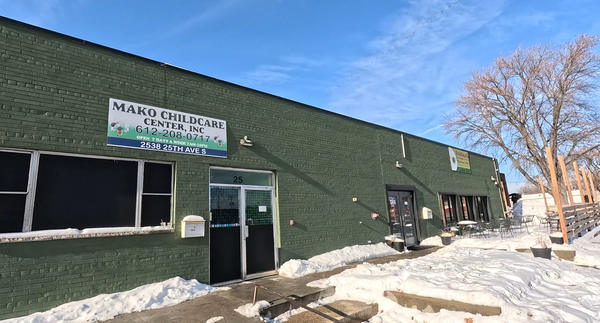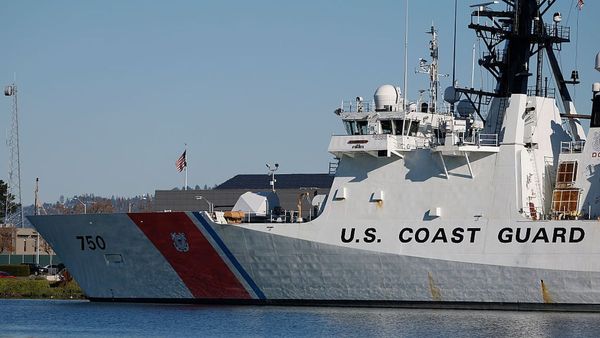
JOHN Lewis last month celebrated 47 years as a wine columnist and, next week, will write his final piece for the Newcastle Herald as he steps into belated retirement. Here, Lewis explains how he fell into wine writing, and reflects on the early days of career spanning nearly five decades.
Trencherman was born
Wine writing was something that began by accident for me in a weekly wine and food column in the Herald's afternoon associate The Newcastle Sun.
I was the Sun's deputy editor in the 1970s and had a deep interest in wine and food, heightened by a 1975 French Tourism Bureau tour of Normandy, Brittany and the Loire.
On my return I decided a food and wine column would help Sun circulation, and a Hunter wine company marketing man eagerly volunteered to write it.
The title Trencherman, for a person with a hearty appetite, was chosen, a launch date fixed and heavy promotion began.

But a week before the inaugural column was due, the writer abruptly pulled out. With no suitable replacement available I became, in the short term, Trencherman, emulating Sun sports writer Jack Farrell in his secret The Stirrer nom de plume.
Time went on and I could find no replacement for the column and so I then, in addition to my deputy editor duties, wrote weekly Trencherman columns from September 1976 to August 1978 and, on transferring to the Herald, I began the wine column.
As the region's first weekly food and wine column, Trencherman chronicled the formative factors that led to the Hunter's marvellous present-day array of fine food establishments.
The Alcron
FANCY a pre-theatre three-course dinner for $5 a head with a wine list that offers a Penfolds Grange Hermitage for $5 a bottle? Sadly you would have to time travel back to 1976 and book at the 116 Church Street, Newcastle, The Alcron Restaurant.
The Alcron was a linchpin of fine dining in Newcastle and the Hunter Valley.

Until George and Helena Oberland established Alcron in 1951, the lone option for special occasion cuisine was the Great Northern Hotel's grand dining room, presided over by a white-tie-and-tails-suited maitre d', who would flourishingly flambe your steak Diane at the table. Otherwise the norm was fish and chips, hamburgers, steak and, somewhat daringly, Chinese from the Chung Hing Restaurant in Hunter Street, west of Union Street.
As Herald history writer Mike Scanlon has recorded, The Alcron story began after the Oberland family fled the 1948 Communist coup in Czechoslovakia and came to Greta Migrant Camp as stateless refugees speaking little English. The ever-resourceful Helena pawned her jewellery to buy a Mayfield house and later the three-storey Church Street terrace with harbour views, which they called Alcron, after a prestigious restaurant in Prague.
From 1951, Mike observed, it provided Newcastle's first brush with cosmopolitan cuisine, extending to such exotics as snails, frogs' legs, pork knuckles, Czech-style beef goulash, potato dumplings and garlic soup.
Over five decades the Alcron hosted Sir William Dobell, Maitland-resident radio star John Laws, legendary University of Newcastle academics Brin Newton John and Godfrey Tanner, as well as visiting entertainers and prime ministers.
Trencherman and Mrs T were among the regular diners, as with all the reviewed establishments paying our own way, although the Sun generously paid for my meal.
We always went incognito to the eating houses and the column was full of praise for restaurants with linen serviettes and tablecloths and castigated those serving frozen vegetables, butter in foil envelopes, red wines cold straight out of the fridge, and failure to offer wines by the glass and from the Hunter.
Beyond The Alcron, Trencherman was finding other exciting good food and wine options and wine industry developments.
Hamilton was a hot spot, initially thanks to Danilo (Danny) and Nori Franco, migrants from the northern Italian province of Treviso who, in 1957, set up the Hamilton Expresso Coffee Bar at 78 Beaumont Street, after importing from Italy one of Newcastle's first lever coffee machines.
With Nori running the kitchen, the coffee bar quickly became Danilo's Restaurant - over the next 20 years treating Trencherman, Mrs T, and hundreds, if not thousands, of Novocastrians to the budget-friendly delights of Italian food.
Trencherman also drew attention to other Italian gems such as the Capri bistro in an old Beaumont Street, Islington, shop just beyond the Hamilton railway gates. With his wife Natolina presiding over the cooking, proprietor Bepi Tonson served hearty authentic Italian working man's fare like a huge 40-cent bowl of bean soup and $4.50 scaloppine.
And just around on corner of Maitland Road and Daniel Street, Islington, was the Licata family's Guiseppe's BYOG Cafe, which gave the T table of four a large bowl of meat soup and a great lasagna and salad for $12.50. And, having helped cook up a storm in the open-to-view kitchen, Guiseppe Licata would entertain patrons with opera arias.
Elsewhere, Trencherman reported on gifted Dutch-born chef Harry Van-Der Wyst's luxurious Glacier Restaurant. It was on the corner of Beaumont and Cleary streets in what was up to the 1960s Gow's Department store, which in its 1920s heyday rivalled even big CBD stores like Winn's and Scott's.
In October 1976, Trencherman told of Newcastle's first Indian restaurant set up at The Junction by Raj Bhandari and Tom Tyler and, in the following January, reported on the Conquistador Restaurant.
Housed in the Hunter Street, Newcastle West, building now home to Rundle's Menswear, Conquistador's brief claim to fame was its bra-less, see-through-bloused waitresses.
In 1977 Port Stephens oyster farming family member Lloyd Moffat took centre stage with excellent seafood and Lake views at the Squid's Ink Restaurant within the Lake Lodge Motel on the Pacific Highway, Belmont, later graduating to the Wharf Road Newcastle Fanny's Restaurant and the storied Lloyd's Restaurant in the Bar Beach surf pavilion.
October 1977 took Trencherman to Chez Ives and a headline reading "An Evening with Ivan the Admirable". The man in question was Ivan Welsh a Newcastle Boys' High student turned 1958 to 1967 Army linguist and intelligence officer with service in Malaya and Vietnam.
In 1977, however, Ivan was the leasee and inventive chef in the restaurant at the City Motel on the Civic area corner of Darby and Burwood streets and gained T-man's praise for his $2.40 Choux Farcis stuffed vine leaves entree and $5.20 Paupiettes de Veau Pacific of prawns and scallops in sliced veal and crab in white sauce.
He subsequently moved on from Chez Ives to lease Squid's Ink from Lloyd Moffat and, in the 1980s, he was to become a Lake Macquarie councillor, then its mayor and from 1988 to 1991 the NSW MLA for Lake Macquarie.

Hunter's most influential fine food
ARGUABLY the most influential, inspirational 1970s Newcastle-Hunter Valley fine food establishment reviewed by Trencherman was that of a young Algeria-born Frenchman.
His name was Robert Molines and his stepfather was a chef at the Palace of Monaco and young Robert trained as a chef at the Catering Institute of Nice and Menton.
He and his family later settled in Australia, coming here in 1968 when his mother was appointed French Consul in Melbourne and her husband and son worked as chefs.
In 1969 Robert honed his skills in Melbourne and in Newcastle at Hamilton's Capanna Restaurant. He then moved to Adelaide and afterwards to Sydney where, in 1972, he established Le Sagittaire at Potts Point, his first restaurant. There he met his great collaborator and wife, Sally.
Late 1973 saw the pair quit Potts Point to take up management of the restaurant at the then-Saxonvale Wines-owned Happy Valley vineyard, on Oakey Creek Road, Pokolbin.
As Trencherman was to opine in a 1976 column, Robert brought haute cuisine to the Hunter wine country. With a love of offal acquired during visits to France, Mr T wrote rave reviews of Molines's $2.40 Kidneys Dijonaise and $1.70 Tripes a la Tomate and $5.50 Garlic Brains main.

From the long-gone Trencherman and Happy Valley days, Robert and Sally have cooked up superb cuisine in various places - culminating since 2008 in Good Food Guide's one toque-ranked Bistro Molines in the scenic and serene Tallavera Grove vineyard at Mount View.
In 2018 the couple were declared Hunter Living Legends of Tourism and Hospitality for their 45 years of epicurean achievement.
In Happy Valley's 1970s gourmet foodsteps came The Cottage Restaurant in an old converted milk bar in West Cessnock. It was set up by journalist, author, De Beyers vineyard co-owner and winemaker and restaurateur Frank Margan.
Frank taught himself to cook by working at the La Rive Gauche in Nice, where he met his third wife, Simone, and they came back to offer a great French provincial menu at The Cottage.
Ever-restless Frank went on to run the Le Cabanon Restaurant in Angel Place, Sydney, and, when his health declined, he came back to work with his winemaker son Andrew at the Broke-based Margan wine and restaurant operation and live in the Hunter up to the time of his death at 85 in 2016.
Trencherman reported on two other 1970s stars in the culinary and grand occasion firmament at Pokolbin - Rothbury Estate headed by the mercurial Len Evans and masterful German-born chef Peter Meir.
With its 34,000-strong mail order wine club, Rothbury's huge cask hall was the site of dinners in which 250 guests had paellas cooked for them in giant pans and, at other times, more formal cutting-edge cuisine banquets were produced by Meier.
One well-remembered six-course $22-a-head dinner was goose soup in pumpkin shells, mushrooms filled with crab meat, seafood quiche, quails Normandy, chicken drumsticks in honey sauce and wild duck and venison pie.
Thanks to his wide circle of friends, Len Evans arranged music-themed dinners that included a night at the opera led by Sydney Conservatorium conductor Richard Gill and Don Burrows jazz concerts. One of the latter was especially memorable because Burrows introduced a slim young Conservatorium student trumpeter of his called James Morrison who blew us all away in a sensational debut.
After a decade at Rothbury, Peter Meier established his Casuarina Restaurant in Hermitage Road, Pokolbin, running it for 18 years before moving in 2000 with his wife Glennis to set up Cliff Edge boutique hotel on New Zealand's Bay of Islands - where Glennis's father was area harbour master.
Trencherman's Newcastle-Hunter Valley roll of honour in those formative years also included:
Oliver Boico's Newcastle Unicorn Restaurant, at 506 Hunter Street, for its great Italian fare and $3.50 Garlic Mussels
The Ashford family, in prime regard Pam and Gary's long-established business lunch haven The Bistro at 102 Darby Street and patriarch Clem, 1978 founder of popular Frederick Street, Merewether, Clams seafood BYOG. Clem had previously run the Shipmates takeaway chain and, while taking to life in a Western Samoan thatched hut, acquired a navel-to-knees tribal tattoo. Asked by Herald reporter Jane-Anne Lee about baring his tattooed rear for a newspaper picture, Clem replied anyone could get their face in the paper.
The Hungarian-themed cuisine at the Enderle family's charming Saint Helena Lochinvar boutique restaurant and bed and breakfast at which Mumma cooked and Pappa welcomed the diners, dispensed the wine and acted as maitre d'. Owned by the Enderles since 1956, Saint Helena was built in 1869 by Philibert Terrier, a famous French winemaker believed to be one of the first vignerons to bring long-gone wine grape vines to Maitland area. The Enderle family had owned the estate since 1956, when it was transformed into a restaurant and art gallery.







